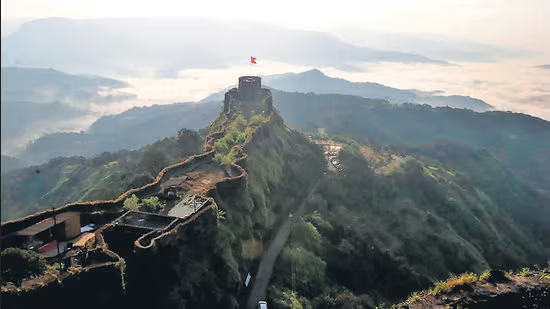India’s Maratha Military Landscapes Earn Prestigious UNESCO World Heritage Status
- MGMMTeam

- Jul 12
- 4 min read
India has achieved a remarkable milestone in preserving and celebrating its rich cultural heritage with the inclusion of twelve historic Maratha forts in the UNESCO World Heritage List. Officially inscribed as the Maratha Military Landscapes of India, this accolade, announced during the 47th session of the World Heritage Committee in Paris, marks India’s 44th cultural site to receive such recognition. This triumph reflects not only the architectural and historical significance of these forts but also India’s successful diplomatic engagement on the global heritage stage.

The Journey to World Heritage Recognition
The path to UNESCO inscription was not without challenges. Initially, ICOMOS—the International Council on Monuments and Sites that advises UNESCO—expressed reservations about the adequacy of selecting only twelve forts to represent the expansive Maratha defense network. They recommended deferring the nomination for further study. However, India mounted a determined diplomatic campaign that rallied support from multiple countries, including Mexico, Greece, Lebanon, Kenya, Kazakhstan, Vietnam, and several others.
Greece played a pivotal role in endorsing the forts, emphasizing their outstanding universal value in terms of military architecture and their embodiment of the “Swarajya” philosophy, a concept of self-rule championed by the Marathas that later inspired India’s independence movement. Lebanon also criticized ICOMOS’s recommendation, reinforcing the property’s undeniable significance. These global endorsements ultimately tipped the balance in favor of India, leading to the successful inscription of the forts.
The Twelve Forts: Pillars of Maratha Strategy and Innovation
The UNESCO-recognized forts span the states of Maharashtra and Tamil Nadu, reflecting a diverse array of terrains and defensive architectures developed between the 17th and 19th centuries. Each fort played a distinctive role in the Maratha military network.
Hill forts like Shivneri, Raigad, and Rajgad stood as impregnable bastions, leveraging their elevation for panoramic surveillance and defense. Pratapgad, known for the historic 1659 battle where Shivaji Maharaj decisively defeated the forces of Afzal Khan, exemplifies the integration of natural terrain with military ingenuity.
The coastal and island forts, including Sindhudurg, Vijaydurg, and Khanderi, highlight the Maratha Empire’s mastery over maritime defense. These forts were instrumental in safeguarding the western coastline and establishing naval supremacy under commanders like Kanhoji Angre. The inclusion of Gingee Fort from Tamil Nadu broadens the geographic scope and underlines the wide influence of Maratha military architecture.
Crafted by visionary engineers such as Hiroji Indulkar, these forts reveal a sophisticated understanding of fortification, water conservation, and sustainable use of the rugged Sahyadri landscape. Together, they form an interconnected network that embodies the Maratha approach to territorial defense and governance.
UNESCO’s Recognition and India’s Commitment to Preservation
The World Heritage Committee’s decision celebrates the forts’ Outstanding Universal Value, lauding them as an extraordinary fusion of military innovation, ecological adaptation, and architectural excellence. The inscription document underscores the forts’ role in shaping regional identities and serving as tangible witnesses to a pivotal period in Indian history.
However, UNESCO has placed a responsibility on India to ensure the forts’ long-term conservation. India is required to submit a detailed maintenance and management report by December 2026, outlining strategies to protect these sites from modern threats such as unregulated tourism and infrastructure projects like ropeways. The emphasis on sustainable preservation reflects the global community’s interest in safeguarding these cultural treasures for future generations.
Celebrating a National and Cultural Triumph
The inscription has ignited celebrations across India, especially in Maharashtra, the heartland of the Maratha Empire. Ambassador Vishal V. Sharma dedicated the honor to the legacy of Chhatrapati Shivaji Maharaj, describing the forts as a unique symbol of resilience, ingenuity, and cultural pride.
Prime Minister Narendra Modi expressed his elation, urging Indians to visit these forts and immerse themselves in the rich heritage of the Marathas. Maharashtra’s Chief Minister, Devendra Fadnavis, hailed the recognition as a historic moment that pays tribute to the valor and vision of Shivaji Maharaj.
Historical Context: Maratha Military Prowess and Philosophy
The forts are inseparable from the Maratha military philosophy, which emphasized swift, guerrilla-style tactics known as Ganimi Kava. Developed by Shivaji Maharaj, this approach combined intelligence gathering, mobility, and strategic use of terrain to outmaneuver larger, better-equipped armies.
Raigad Fort, perched atop a hill, served as the empire’s capital and the site of Shivaji’s coronation in 1674. It stands as a testament to the fusion of political power and military strength. Meanwhile, coastal forts like Sindhudurg demonstrate the empire’s prowess in naval defense, safeguarding trade routes and repelling foreign invasions.
Looking Forward: Heritage, Tourism, and Global Recognition
With the Maratha Military Landscapes now enshrined on the World Heritage List, India is poised to leverage this recognition to promote responsible heritage tourism and cultural education. The inscription is expected to boost local economies while encouraging preservation and scholarly research.
Additionally, India is preparing to nominate the ancient site of Sarnath in Varanasi, further cementing its role as a steward of world heritage. The success of the Maratha forts nomination serves as a beacon for future heritage endeavors.
Conclusion
The inscription of the twelve Maratha forts as a UNESCO World Heritage Site is a moment of immense pride for India. It honors a chapter of history marked by visionary leadership, architectural brilliance, and a spirit of self-rule that continues to inspire. This achievement underscores the importance of preserving cultural landmarks as living testimonies to a nation’s identity and resilience. As these forts open their gates to the world, they invite us all to explore, learn, and carry forward their enduring legacy.
(Sources: Hindustan Times, NDTV, Economic Times)




Comments